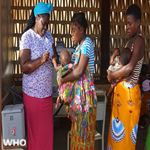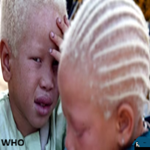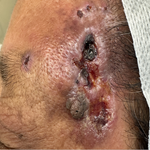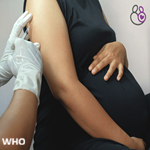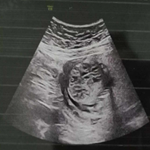Higher education resource services, East Africa: a women leadership and management development model
Margaret Khaitsa, Naomi Watasa Lumutenga, Ruth Muwazi, Florence Wakoko-Studstill, Irene Naigaga, May Sengendo, Consolata Kabonesa, Wanjiku Mukabi Kabira, Joy Mueni Maina Kiiru, Katherine Kanabahita, Frances Nyachwo, Mary Okwakol, Catherine Anita Wandera, Kifle Tsegabirhant, Katunzi-Mollel Kokuberwa, Judith Samwel Kahamba, Angele Musabyimana, Rosine Manishimwe, Marie Bigendako, Renovate Irambona
Corresponding author: Margaret Loy Khaitsa, Department of Pathobiology and Population Medicine, College of Veterinary Medicine, Mississippi State University, P.O. Box 6100, MS 39762, USA 
Received: 15 Mar 2017 - Accepted: 13 May 2017 - Published: 25 Aug 2017
Domain: Epidemiology,Infectious diseases epidemiology
Keywords: Women leadership, management, Professional Development Model, East Africa
This article is published as part of the supplement Capacity building in Integrated Management of Transboundary Animal Diseases and Zoonoses (CIMTRADZ), commissioned by The Mississippi State University College of Veterinary Medicine.
©Margaret Khaitsa et al. Pan African Medical Journal (ISSN: 1937-8688). This is an Open Access article distributed under the terms of the Creative Commons Attribution International 4.0 License (https://creativecommons.org/licenses/by/4.0/), which permits unrestricted use, distribution, and reproduction in any medium, provided the original work is properly cited.
Cite this article: Margaret Khaitsa et al. Higher education resource services, East Africa: a women leadership and management development model. Pan African Medical Journal. 2017;27(4):7. [doi: 10.11604/pamj.supp.2017.27.4.12269]
Available online at: https://www.panafrican-med-journal.com//content/series/27/4/7/full
Supplement 
Higher education resource services, East Africa: a women leadership and management development model
Higher education resource services, East Africa: a women leadership and management development model
Margaret Loy Khaitsa1,2,&, Naomi Watasa Lumutenga2, Ruth Muwazi2,3, Florence Wakoko-Studstill2,4, Irene Naigaga2,3, May Sengendo5, Consolata Kabonesa5, Wanjiku Kabira6, Joy Mueni Maina Kiiru6, Katherine Kanabahita7, Frances Nyachwo7, Mary Okwakol8, Catherine Wandera8, Kifle Tsegabirhant9, Tesfu Hailu Frehiwot10, Katunzi-Mollel Kokuberwa11, Judith Samwel Kahamba12, Angele Musabyimana13, Rosine Manishimwe13, Marie Bigendako14, Renovate Irambona14
1Department of Pathobiology and Population Medicine, College of Veterinary Medicine, Mississippi State University, P.O. Box 6100, MS 39762, USA, 2Higher Education Resource Services, East Africa, 401 Senate Building, Makerere University, Kampala, Uganda, 3College of Veterinary Medicine, Animal Resources and Biosecurity, Makerere University, Kampala, Uganda and AFRISA Initiative, Uganda, 4Department of Criminal Justice and Sociology, Columbus State University, 4225 University Avenue, Columbus, GA 31907, USA, 5School of Women and Gender Studies, Makerere University, P.O. Box 7062 Kampala, Uganda, 6African Women´s Studies Centre, University of Nairobi, Center for African Studies, PO. Box 30197 Nairobi, Kenya, 7Gender Mainstreaming Directorate, Makerere University, P.O. Box, 7062, Kampala, Uganda, 8Busitema University, P.O. Box, 236, Tororo, Uganda, 9College of Veterinary Medicine, Mekelle University, Mekelle, Ethiopia, 10College of Veterinary Medicine, Samara University, Ethiopia, 11University of Dar-Es-Salaam, Tanzania, 12Department of Development Studies, College of Social Sciences and Humanities, Sokoine University of Agriculture (SUA), Morogoro, Tanzania, 13University of Rwanda, Kigali, Rwanda, 14University du Burundi, Bujumbura, Burundi
&Corresponding author
Margaret Loy Khaitsa, Department of Pathobiology and Population Medicine, College of Veterinary Medicine, Mississippi State University, P.O. Box 6100, MS 39762, USA
Introduction: whereas significant numbers of women occupy leadership positions in universities in East Africa and elsewhere, gender inequalities persist. Higher Education Resource Services, East Africa (HERS-EA) is an educational non-profit organization incorporated in September, 2014, and providing leadership and management development for women in higher education institutions in East Africa.
Methods: with support of the United States Agency for International Development, HERS-EA was officially founded on August 5, 2014 at Imperial Royale hotel in Kampala, Uganda. Several universities from East Africa participated including; Makerere University, Kyambogo University, Busitema University, Mbarara University, Gulu University, Muni University, Kabale University, Uganda Christian University, Mukono (Uganda), Sokoine University of Agriculture (Tanzania), University of Nairobi (Kenya), Mekelle University and Samara University (Ethiopia), University of Rwanda (Rwanda), and University of Burundi (Burundi). The Specific Objectives of HERS-EA are to: 1) Advance women leaders in higher education institutions in East Africa and 2) Empower women at multi-tiers of leadership while integrating the results to change systems.
Results: since its founding, HERS-EA has acquired an office at the Senate Building, Makerere University, developed a curriculum for HERS-EA ACADEMY that will be offered in July, 2017, successfully implemented a community engagement project for empowering rural women in eastern Uganda, and submitted several grants to source for funding for HERS-EA programs.
Conclusion: this paper describes the genesis and evolution of HERS-EA, the accomplishments and lessons learned, the challenges that still remain, and the Way Forward.
Higher Education Resource Services, East Africa (HERS-EA) is an educational non-profit organization incorporated in September, 2014 to provide leadership and management development for women in higher education institutions (HEIs) in East Africa [1]. The specific objectives of HERS-EA are to: 1) Advance women leaders in higher education institutions (HEIs) in East Africa and 2) Empower women at multi-tiers of leadership while integrating the results to change systems. HERS-EA is an affiliate of HERS, established in the USA in 1972 [2]. HERS-South Africa was established in 2003 [3] and HERS-West Africa [4] launched in 2015 at The Obafemi Awolowo University, Osun State, southwestern Nigeria.
HERS-EA currently operates in Burundi, Ethiopia, Kenya, Rwanda, South Sudan, and Uganda (Figure 1). HERS-EA current activities include: 1) Sharing information between women in HEIs in East Africa via newsletters, website and other social media platforms; 2) Circulating information on development and career advancement opportunities, on the HERS-EA website; 3) Facilitating networking between women in HEIs; 4) Hosting the annual HERS-EA ACADEMY; 5) Seeking research, training, and community outreach collaborations; and 6) Seeking funding opportunities to increase participation in HERS-EA programs of women that have limited access to funding.
Why HERS-EA? Whereas significant numbers of women occupy leadership positions in universities in East Africa and elsewhere, gender inequalities persist [1]. In Africa, in spite of the various programs that have been implemented to advance women in leadership and managerial responsibilities, women have remained largely invisible at high levels of decision making [1]. According to the Inter-university Council for East Africa (IUCEA) [5], the demand for higher education in East Africa has grown tremendously, and the number of public and private university institutions has also increased exponentially. For example, the number of IUCEA member university institutions grew from 33 in 2000 to 100 in 2017 [5]. In spite of this growth, there is a persistent under-representation of women in leadership and managerial positions in the East African universities. While some institutions such as Makerere University (Mak) have implemented affirmative action measures to increase the enrolment of girls in universities, there is a disproportionate number of female role models on the faculty and on the staff [6]. A few women who occupy administrative positions are often faced with the challenge of a glass ceiling which keeps them from rising to higher positions irrespective of their qualifications or achievements [6].
A report of the Association of Commonwealth Universities indicated that women were under-represented at the senior levels of the academic and administrative hierarchies of Commonwealth universities, and men outnumbered women by 4:1 at middle management level and 10:1 at senior level [7]. These gender inequalities are widespread in other regions of the world as well [8-11]. In the United States, a sector that serves a majority of students at all degree levels who are women, there is lack of parity by women in senior leadership roles [9]. Although women earn the majority of postsecondary degrees, they occupy just 26 percent of all college presidencies, according to the American Council on Education [12].
The genesis of HERS-EA: with support of the United States Agency for International Development (USAID), under the project “Capacity building in Integrated Management of Transboundary Animal Diseases and Zoonoses” [13], HERS-EA was officially founded on August 5, 2014 at Imperial Royale hotel in Kampala, Uganda [1]. Several universities from East Africa participated including; Mak, Kyambogo University, Busitema University, Mbarara University, Gulu University, Muni University, Kabale University (Uganda), Sokoine University of Agriculture (Tanzania), University of Nairobi (Kenya), Mekelle University and Samara University (Ethiopia), University of Rwanda (Rwanda), and University of Burundi (Burundi) [1]. Universities in North America that participated in the planning and implementation of HERS-EA include; Mississippi State University (MSSU), Columbus State University (CSU), GA, Michigan State University, Washington State University, and University of Saskatchewan [13]. The process for planning and implementing HERS-EA was started by women that had trained at HERS, Denver, CO supported by other women from Uganda that had trained at HERS-SA. The planning process included 1) participation in HERS, Denver, CO, 2) Signing of a Memorandum of Understanding (MOU) between HERS and Mak as the host institution, and 3) Convening meetings with several stake holders including HERS-SA alumni in Uganda, Mak School of Women and Gender Studies (SWGS), Gender Mainstreaming Directorate, Africa Institute for Strategic Services and Development (AFRISA), the Uganda National Council for Higher Education (UNCHE), the Ministry of East African Community Affairs, IUCEA, [14], and several groups and organizations.
The Process of Establishing HERS-EA - Historical Timeline, Meetings, Key Stakeholders, and Stages in the Process : July 24-August 7, 2011: Margaret Khaitsa attended HERS-Denver institute; discussed the idea of HERS-EA with Judith White, President and Executive Director of HERS in the USA and Sabie Surtee - Director of HERS-SA who also attended same institute; August 6, 2011: Judith White introduced Dr. Pius Kamau (President, Africa America Higher Education Partnerships (AAHEP) to Margaret Khaitsa & Sabie Surtee & facilitated a meeting of the three to discuss synergies between AAHEP, HERS-EA and HERS-SA; July 19, 2012: Dr. Consolata Kabonesa, Dean, SWGS, Mak, and HERS-SA alum, Dr. Margaret Khaitsa-North Dakota State University (NDSU) & Dr. Florence Wakoko-Studstill - CSU met and discussed HERS-EA launch; In August 2012: Judith White shared HERS Guidelines on affiliations with sister organizations; September 24, 2012: Judith White, Shannon Martin-Roebuck, HERS Director of Programs; Dr. Pius Kamau, Sabie Surtee & Margaret Khaitsa met (conference call) to discuss HERS-EA launch & hear South African perspectives; October 14, 2012: Pius Kamau met with four HERS-SA alums from Tanzania at The White Sand Hotel, Dar es Salam, Tanzania and discussed HERS-EA launch; October 15, 2012: Margaret Khaitsa, Naomi Lumutenga, Pius Kamau and HERS alums and HERS-EA women supporters from Uganda (14) and Kenya (1) met at The Sheraton Hotel, Kampala Uganda. A HERS-EA Planning Committee was constituted (Chair-Margaret Khaitsa; Vice Chair- Naomi Lumutenga) and a Secretariat for HERS-EA set up at SWGS, Mak with Hellen Grace Akwii Wangusa as a volunteer Coordinator; December 2012: 1) A proposal was developed for submission to Carnegie Foundation to fund HERS-EA initiative, and 2) A concept note to set up HERS-EA was submitted to HERS Board; February 15, 2013: HERS Board approved HERS-EA concept; July 1-5, 2013: HERS-EA Planning Committee meetings continued. 1) HERS-EA secretariat was moved to AFRISA at Mak. 2) Another volunteer (Robina Isakwa) Coordinated HERS-EA, 3) A general MOU was drafted, 4) HERS Board provided Guidelines for affiliation including the need for a host institution to nurture HERS-EA; October 3, 2013: Mak signed an MOU with HERS Board to host HERS-EA; October 4, 2013 to August 4, 2014: Several meetings of HERS-EA Planning Committee were held at Mak including the final meetings chaired by Dr. Florence Wakoko-Studstill (June 1-August 4) to launch of HERS-EA; August 5, 2014: HERS-EA was officially launched at The Imperial Royale Hotel, Kampala, Uganda.
HERS-EA curriculum and operational framework
HERS-EA Curriculum
HERS-EA curriculum development started at the HERS-EA launch and continued at a workshop held on June 30-July 1, 2016 at The Grand Global Hotel, in Kampala, Uganda funded by The National Strategic Planning & Analysis Research Center (NSPARC), MSSU. HERS-EA core curriculum draws on the original HERS curriculum to develop women leaders in HEIs so that they can have an institutional (“systems”) perspective and have the organizational capacity in order to have an institutional impact. The core curriculum is culturally/regionally specific for women in HEIs in East Africa. HERS-EA broad goals are for empowering more women to finish primary and secondary schooling (traditional and alternative routes) - both as a pathway to higher education and as a more immediate route to self-sufficiency, better health, and community development for the majority of women in the region. The core of the HERS-EA leadership model is for empowering (rather than just “helping”) women across different tiers and connecting women researchers in HEIs to address unique research issues pertaining to women at all tiers.
Approach
HERS-EA curriculum is a multi-tiered application of the “Leader within Her Systems” approach-drawing from the HERS “individual leader with institutional impact” model [1]. HERS-EA works with the 1) Top Executives, in higher education and beyond; 2) the “returning learners” who have some engagement with educational systems; 3) the grassroots learners/leaders who are outside those systems now but must learn to be advocates for girls in their communities, and 4) the women in the educational systems but not at executive leadership level (Figure 2). These are the women in the school systems and the higher educational settings who are in direct contact as teachers and professors and administrators and need to have their capacities developed, and exposed to broader career options and alternatives.
HERS-EA and Community Development
The primary goal of HERS-EA core curriculum is to advance women leaders in HEIs in East Africa. However, HERS-EA also connects HEIs in East Africa to global partners using the leadership skills and international networks developed through HERS and HERS affiliates. Additionally, HERS-EA pursues community development projects through the multi-tiered application of the “Leader within her Systems” approach. The community-focused programs are implemented through one or several institutional partners. Expected Outcomes include transformed rural women who are economically, socially and politically empowered with improved livelihoods, self-sufficiency, better health, and developed communities.
HERS-EA ACADEMY
The HERS-EA ACADEMY offers a one week long intensive leadership and management development curriculum which equips women with skills needed to advance their personal career and successfully navigate the institutional environment where they operate. The curriculum incorporates elements of the signature HERS curriculum but has been adapted and enhanced by the directors of HERS-EA as appropriate for the goals and needs of women in East Africa. The program is focused on managing and leading change, human resource development and institutional effectiveness. The Leadership Development Model comprises: 1) Personal Development, 2) Institutional Awareness, and 3) Networking, covering topics such as: Career Mapping; Research and Publishing; Managing and Leading Change; Reframing Organizations for effective work and Partnerships. Working closely with HERS-EA resource persons and staff, the ACADEMY prepares every participant to strengthen and expand her leadership skills and to meet their unique professional needs required to change higher education in the 21st century.
Major accomplishments
HERS-EA is registered as a non-governmental organization in Uganda and will mentor and inspire women in East Africa to develop their leadership and management skills. A curriculum for HERS-EA ACADEMY and a website (www.HERS-EA.org) for sharing and circulating information on development and career advancement opportunities for women have been developed. HERS-EA has established close collaboration with: 1) AFRISA at Mak, a public private partnership that is transforming women from peasants to empowered decision makers through ‘value addition’ activities, 2) African Village Support (www.africanvillagesupport.org) which operates in rural communities in Eastern Uganda, and implemented a project on production of re-usable sanitary pads to increase retention of girls in school [15], and 3) Several institutions including, MSU, CSU and Auburn University, and submitted several joint grants (Table 1).
HERS-EA Organizational and Management Structure
HERS-EA Organizational Structure is summarized in Figure 3, and comprises the following: (i) HERS-EA Board - headed by HERS-EA Board Chair. Board membership does not exceed 15 and comprises, founder members (4), HERS-EA Executive Director (1), HERS-EA Country Directors (7), Special advisors (HERS, HERS-SA, HERS-WA) (3). The Board plays an advisory role to the Executive Committee and provides strategic planning of HERS-EA including curriculum standards and quality control. The Board holds meetings annually and as needed.
(ii) HERS-EA Executive Committee - This committee located at the HERS-EA secretariat in Kampala, Uganda is headed by HERS-EA Executive Director, and is comprised of a HERS-EA Treasurer, Secretary, Coordinator, and volunteers. The committee works closely with HERS-EA Country Directors to oversee and coordinate all HERS-EA activities as agreed upon by member institutions in East Africa, including: planning and implementing HERS-EA training; resource mobilization and grant writing; coordinating partnerships with HERS-EA stakeholders as described in the HERS-EA Operational framework (Figure 2); Oversee HERS-EA Curriculum standards and quality control;; research, training and outreach coordination; serve as a knowledge portal; communication, advocacy and mobilizing HERS-EA alumni.
(iii) HERS-EA country offices - are located at each of the East African member country, headed by HERS-EA Country Director. This office is responsible for: day to day support and coordination of HERS-EA activities in the country. The HERS-EA Country Directors work closely with HERS-EA Executive Committee at The HERS-EA Secretariat in Kampala, Uganda to coordinate HERS-EA activities in the country and region, including: planning HERS-EA training, resource mobilization and grant writing; research, training and outreach coordination among member institutions in country; knowledge dissemination; HERS-EA communication and advocacy especially to government and other civic bodies; partnership development, HERS-EA Alumni Association management and mobilizing member institutions to participate in HERS-EA programs.
(iv) HERS-EA Alumni Association - is responsible for HERS-EA advocacy and has a representative on The HERS-EA Board. HERS-EA Management
HERS-EA is currently governed by a HERS-EA Executive Committee comprising HERS-EA Executive Director, Secretary, Treasurer and Coordinator, and volunteers, housed at HERS-EA secretariat located at Mak, the host institution.
Challenges
HERS-EA has experienced various challenges including but not limited to: 1) Financial constraints to run HERS-EA office and HERS-EA ACADEMY2) Lack of Independent Office Space;, 3) Lack of permanent Staff; HERS-EA plans to address these challenges through continued resource mobilization harnessing the support of alumni in the region and stakeholder institutions such as IUCEA, EAC. The HERS-EA Executive leadership is optimistic about the future of HERS-EA and strongly believes that these challenges are temporary.
The way forward
HERS-EA has launched a new model of university leadership that is unique to women and that can address local challenges and ultimately serve as a basis for new policy on the governance of the rapidly expanding higher education sector in Africa. HERS-EA ACADEMY (to be launched in July 2017) will train women from HEIs in East Africa with several senior women serving as resource persons. HERS-EA plans to continue mobilizing resources to train at least ten more women from East Africa (at least two each from the rest of five East African member countries-Kenya, Tanzania, Rwanda, South Sudan, Burundi, Ethiopia) to serve on HERS-EA Board of Governance. HERS-EA will continue to seek funding and develop new partnerships, while maintaining already existing ones.
HERS-EA can support critical regional efforts
HERS-EA and Africa Higher Education Agenda, 2063
HERS-EA is a regional organization whose goals align with the Africa Higher Education Agenda 2063 [16]. The African Higher Education Summit held in Dakar Senegal (March 10-12, 2015) called for: African Universities harmonization of curricula, Quality Assurance, Mobility of faculty, Joint and collaborative research and training against locally, regionally, and internationally agreed benchmarks of excellence [16]. Additionally, HEIs were encouraged to embrace pedagogies that emphasize participation, creativity, invention, innovative citizenship and new technologies for teaching and learning. HERS-EA provides such pedagogy for women in HEIs in East Africa. Also, at the continental and sub-regional level the African Union (AU) and the sub-regional groupings were called upon to show similar interest in differentiation and diversification of the continent´s higher education system; this would help the development of a continental system for the enhancement of student mobility and also provide the basis for comparison among HEIs in Africa. In particular: the AU and sub-regional groupings like the EAC [17], Economic Commission of West African States [18], and the Southern African Development Community [19] were encouraged to provide guidelines for a harmonized classification of tertiary educational institutions. With its alignment with these goals, HERS-EA is in a position to play a significant role in supporting Africa to: 1) reach gender parity in tertiary enrolments and among academic staff and senior administrators, and 2) attain 100% terminal degrees for faculty within higher education institutions (HEIs) by 2063, with at least 54% of them being women. Globally gender parity of tertiary enrolments was reached in 2005 and females now slightly out-number males [20]. For sub-Saharan Africa (SSA), the female enrolment ratio in 2012 was 37.7%, down from 39.1% in 1999, and for the Arab states it was 50.3% in 2012, up from 39.1% in 1999 [20].
Quality, Quantity, Excellence and Relevance of Research in African Higher Education institutions
Higher Education research capacity in Africa in the form of published peer reviewed articles, and Master´s and Doctoral output is disturbingly low [20]. Recent indicators show that SSA only accounts for less than 1% of the world´s research output, despite having 12% of the world´s population [20]. Post graduate enrolments in SSA have remained flat at 5% between 2008 and 2012. Africa´s universities produce less than 1% of global scholarly articles [20]. Overall, research in the physical sciences and STEM-related fields makes up only 29% of all research in the region (when South Africa is excluded) compared to an average of 68% in Malaysia, which had the same research output as Africa in 2003 [20]. In fact, the share of STEM research in sub-Saharan Africa has declined by 0.2% every year since 2002. Fewer articles (32% below the global average) cited the continent´s science research, and this number has stayed the same since 2003, suggesting less quantity, and quality [20]. According ADEA (2015) [20], research output should be increased in the context of national and regional needs articulated through close collaboration between research institutions, government and other stakeholders, without compromising the autonomy of research institutions. Also, strong internal support and administrative systems are vital for monitoring funding, encouraging new projects and establishing an environment that encourages research. HERS-EA is set up to address these needs particularly with creating an environment that supports collaboration between women researchers in HEIs in East Africa.
HERS-EA and the Status of Women in Science Technology Engineering and Maths (STEM)
Using Uganda case study, the involvement and status of women in STEM is generally low. Among graduates in STEM from tertiary institutions in Uganda, fewer women qualify as scientists and engineers compared to men [21]. This outlook of low women involvement in STEM is similar in many African countries [22]. In Uganda, the Girls' enrolment share - the number of girls enrolled expressed as a percentage of the total number of pupils enrolled - in primary and secondary school is 47.4% and 42.8%, respectively [23]. This problem is compounded by a persistent high attrition rate (13%) estimated to be the highest in East Africa [24]. In Uganda, the factors that hinder the choice of science and engineering careers for women include: socio-cultural biases; discrimination against women; low self-esteem; inadequate and poor science facilities, professors and fellow students who reject a woman´s role in science; insufficient role modelling and mentoring; poor remuneration of scientific and technological professionals; insufficient scholarship opportunities; and multiple roles played by women; [21]. It is notable that these factors persist in spite of existing conventional mentoring models. An inventory and critique of the existing mentoring models is therefore needed to identify existing gaps in the system so they can be addressed accordingly. HERS-EA has initiated partnerships with organizations such as the Organization for Women in Science for the Developing World [25]; The Academy of Sciences for the Developing World [26]; Africa America Higher Education Partnerships [27], to address factors affecting choice of STEM by women in Africa, and to promote active participation of women in science. These organizations are well aligned and synergistic based upon their missions to address factors that affect the choice of STEM by girls/women in Africa in a comprehensive vertical integrated manner starting with girls in primary, secondary and tertiary level, graduate level and at various levels of their professional careers.
HERS-EA and empowerment of rural women
There is a growing reservoir of marginalised girls and women in East Africa [28]. In Uganda, efforts by the government and non-government organizations to empower these women have not achieved the desired impacts due to several factors, including: interventions unsuitable to local conditions; lack of support for women/girls; and failure to sensitize men to support women [28]. The Uganda, government through Universal Primary and Secondary Education has not satisfactorily addressed the high school dropout rates for girls. Approximately 11% fewer girls complete primary school compared to boys [29]. Uganda´s average survival rate at primary school is the lowest in East Africa, at 33% compared to 78% in Tanzania, 81% in Rwanda and 84% in Kenya [29]. HERS-EA, addresses some of the gender issues described above through partnerships with institutions such as AFRISA at Mak [14] to offer tailor-made curricula designed to identify, transform, and nurture women trainees along suitable value chains and enterprises using simple technologies and sustainable resources tailored to local conditions and needs. For instance, HERS-EA, MSSU, AFRISA and Africa Village Support trained marginalised rural women in Bulambuli district of Uganda to train fellow women in Butaleja district to make low-cost re-usable sanitary pads [15]. These pads are accessible to rural girls to address menstruation hygiene management, a major reason for girls´ school dropout rate in Uganda [30]. These women have a potential to join a career path at AFRISA where the value chain approach, such as poultry, pig, dairy, fish industry and business is already institutionalised. Also, The World Bank is supporting African leaders as they seek ways to transform higher education to produces entrepreneurs, creative thinkers, and business leaders who contribute to economic growth and poverty reduction [31]. HERS-EA operational framework and goals align with this World Bank mission.
Collaboration between HER-EA, HERS-SA and HERS-WA
All three organizations follow program Guidelines that were developed by HERS to assure consistency in content and approach among Sister Organizations and to maintain the brand and good will associated with HERS and HERS Sister Organizations. The three organizations will collaborate and share curricula, program marketing materials, best practices and lessons learned. Additionally, where possible the three organizations will seek joint funding.
HERS-EA development was a milestone that has created the much needed support system for women in HEIs in East Africa. HERS-EA is a critical resource for women advancement in research and in promotion to leadership and management positions in HEIs. These advancements will lead to mentorship of young women faculty in HEIs and inspire more women to develop leadership and management skills. Major obstacles still remain, particularly financial support and regional governments´ buy in. Nevertheless, the future for HERS-EA is bright particularly, in the context of regional economic integration under the EAC and IUCEA which will increasingly play a significant role in integrating HEIs in East Africa. This framework also aligns directly with the African Union Higher Education Agenda 2063 and The United Nations Sustainable Development Agenda # 5 - to “achieve gender equality and empower all women and girls”. HERS-EA plans to overcome the current challenges through continued resource mobilization such as through grant writing and partnerships with stakeholders and potential funding agencies. For instance, the IUCEA will support five Country Directors from Burundi, Kenya, Rwanda, South Sudan and Tanzania to attend the HERS-EA ACADEMY in July 2017. HERS-EA hopes this will be the beginning of a long term collaboration between HERS-EA, IUCEA and EAC.
What is known about this topic
- Higher Education Resources Services (HERS), Denver Colorado, USA has been offering leadership and management institutes for women in the US and elsewhere since 1972;
- HERS-South Africa, an affiliate of HERS has been offering leadership and management ACADEMY since 2003, with support from Melon Foundation, several women from South Africa, and Uganda, Tanzania, Nigeria and Ghana attended HERS-SA and currently hold senior administrative positions;
- When that funding ended, HERS-SA trained mainly women from South Africa HEIs.
What this study adds
- HERS-EA incorporated in 2014, will now offer leadership and management ACADEMY to women in East Africa filling the gap created when support for HERS-SA ended;
- HERS-EA curriculum has been adapted and enhanced by women from East Africa to suit the goals and needs of women in East Africa.
The authors declare no competing interest.
All authors served on HERS-EA planning committee, developed and designed the paper, wrote the article, reviewed several drafts, and approved the version to be published.
The authors are grateful for: USAID funding under The Africa-US Higher Education Initiative through CIMTRADZ project, CIMTRADZ partners, HERS and affiliated organizations (HERS-SA, HERS-WA) support, HERS alumni, and all volunteers.
Table 1:
sample grants submitted by Higher Education Resource Services, East
Africa (HERS-EA) to leverage funds
Figure 1: higher education resource services, East Africa, current operational area (Burundi, Ethiopia, Kenya, Rwanda, South Sudan, Rwanda, and Uganda)
Figure 2: higher education resource services, East Africa, operational framework
Figure 3: higher education resource services, East Africa, organizational and management structure
- HERS-EA. Higher Education Resource Services, East Africa. 2017. Accessed: March 12, 2017. Google Scholar
- HERS. Higher Education Resource Services, Denver, CO. 2017. Accessed: March 12, 2017. Google Scholar
- HERS-SA. Higher Education Resource Services, South Africa. 2017. Accessed: March 12, 2017. Google Scholar
- HERS-WA. Higher Education Resource Services, West Africa. 2017. Accessed: March 12, 2017. Google Scholar
- IUCEA. Inter-university Council for East Africa. 2017. Accessed: March 12, 2017. Google Scholar
- Wakoko F, Kabasa JD, Tendo D. Gender Mainstreaming in Veterinary Programs: Using gender audits to foster capacity building and women's empowerment in Higher Education. Pan African Medical Journal. 2017; in review. Google Scholar
- ACU. The Association of Commonwealth Universities. “A single sex profession? Female staff numbers in Commonwealth universities” Commonwealth Higher Education Management Service (CHEMS) report. 1998. Google Scholar
- Allan EJ. Women's Status in Higher Education: Equity Matters: AEHE -1st edition. 2014; 37(1). Google Scholar
- Longman KW and Madsen SR. Women and Leadership in Higher Education. Women and Leadership: Research, Theory, and Practice. 2014. Google Scholar
- Pasque PA and Nicholson SE. Empowering Women in Higher Education and Student Affairs: Theory, Research, Narratives, and Practice. 2014. Google Scholar
- Sax LJ, Altbach PG, Gumport PJ, Berdahl RO. American Higher Education in the Twenty-First Century: Social, Political, and Economic Challenges - 3rd edition. 2014. Google Scholar
- ACE. American Council on Education. 2015. Google Scholar
- Ekiri AB, Khaitsa MK and Kabasa JD. Africa-US Integrated Disease Management Consortium: A Model for International Education and International Development. NACTA. 2013; 57(3a): 115-121. PubMed | Google Scholar
- AFRISA. Africa Institute for Strategic Animal Resource Services and Development. 2017. Accessed: March 12, 2017. Google Scholar
- Lumutenga N, Khaitsa ML, Muwazi R, Wakoko F, Naigaga I. HERS-East Africa and the Scholarship of Engagement through Outreach, Community Engagement and Research: Women Empowering Women through Reusable Sanitary Pads. Journal of Community Engagement and Scholarship. 2017; in review. Google Scholar
- African Higher Education Summit. Report of The African Higher Education Summit on Revitalizing Higher Education for Africa´s Future´, Dakar, Senegal, 10th -12th March, 2015. Accessed: March 12, 2017. Google Scholar
- EAC. The East African Community. 2017. Accessed: March 12, 2017. Google Scholar
- ECOWAS. Economic Commission of West African States. 2017. Google Scholar
- SADC. The Southern African Development Community. 2017. Google Scholar
- ADEA. Association for the Development of Education in Africa (ADEA); The Role of Research and Post Graduate Studies in African Higher Education, paper presented at Africa Higher Education Summit on Revitalizing Higher Education for Africa´s future (Dakar, Senegal, March 10-12, 2015). Google Scholar
- Muloni I. Promising Best Practices for The Advancement of Women In Science and Engineering: The Case For Uganda Electricity Distribution Company Limited (UEDCL). Presented at the Forum for Women in Engineering & Science at The World Engineer's Convention, Shanghai, China, November 2, 2004. Google Scholar
- ADEA. Association for the Development of Education in Africa (ADEA); Stimulating Science, Technology and Innovation (ST I) Development in Africa: An Urgent Post-2015. Agenda paper presented at Africa Higher Education Summit on Revitalizing Higher Education for Africa´s future (Dakar, Senegal, March 10-12, 2015). Google Scholar
- UNESCO. The United Nations Educational, Scientific and Cultural Organization 2010 report. EDUCATION FOR ALL 2000-2015: achievements and challenges. 2015. Accessed: March 12, 2017. Google Scholar
- AMG International. Advancing the Ministries of the Gospel (AMG) International Uganda. 2011. Accessed: March 12, 2017. Google Scholar
- OWSDW. Organization for Women in Science for the Developing World. 2017. (Cited February 12, 2017). Google Scholar
- TWAS. The Academy of Sciences for the Developing World. 2017. (Cited September 12, 2015). Google Scholar
- AAHEP. Africa America Higher Education Partnerships. 2017. Accessed: March 12, 2017. Google Scholar
- Naigaga I, Lumutenga N, Muwazi R, Hamba L, Wakoko F, Khaitsa ML. HERS-East Africa, Alternative Education Initiative (AEI) and Home Based Entrepreneurship (HBE) for Women Empowerment. The 2016 Auburn University Outreach and the Tuskegee Auburn Women´s Leadership Alliance (TAWLA) Symposium hosted at Auburn University Hotel and Dixon Conference Center, February 15-17, 2016. Google Scholar
- Mpyangu CM, Ochen EA, Onyango EO, Lubaale, YA. Out of school children study in Uganda. UNICEF Report. 2014. (Cited February 12, 2017). Google Scholar
- Egunyu D. It is time to move menstrual hygiene management from panties to policy. 2014. Google Scholar
- World Bank. Human capital for agriculture in Africa. Science, technology, and skills for Africa's development. Washington DC; World Bank Group. 2014. Google Scholar
Search
This article authors
On Pubmed
- Margaret Khaitsa
- Naomi Watasa Lumutenga
- Ruth Muwazi
- Florence Wakoko-Studstill
- Irene Naigaga
- May Sengendo
- Consolata Kabonesa
- Wanjiku Mukabi Kabira
- Joy Mueni Maina Kiiru
- Katherine Kanabahita
- Frances Nyachwo
- Mary Okwakol
- Catherine Anita Wandera
- Kifle Tsegabirhant
- Katunzi-Mollel Kokuberwa
- Judith Samwel Kahamba
- Angele Musabyimana
- Rosine Manishimwe
- Marie Bigendako
- Renovate Irambona
On Google Scholar
- Margaret Khaitsa
- Naomi Watasa Lumutenga
- Ruth Muwazi
- Florence Wakoko-Studstill
- Irene Naigaga
- May Sengendo
- Consolata Kabonesa
- Wanjiku Mukabi Kabira
- Joy Mueni Maina Kiiru
- Katherine Kanabahita
- Frances Nyachwo
- Mary Okwakol
- Catherine Anita Wandera
- Kifle Tsegabirhant
- Katunzi-Mollel Kokuberwa
- Judith Samwel Kahamba
- Angele Musabyimana
- Rosine Manishimwe
- Marie Bigendako
- Renovate Irambona







